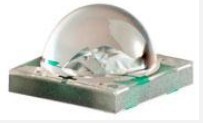LEDs prove cost-saving horticulture alternative to sodium lamps
Researchers at the Department of Horticulture and Landscape Architecture at Purdue University have harvested new information about the feasibility of using LEDs in greenhouse tomato operations.
To satisfy increasing consumer demand for locally grown, fresh tomatoes during off-seasons, greenhouse tomato growers often need to rely on supplemental lighting. Tomato growers are looking to LEDs, favored for their energy-saving potential, as an alternative to high-pressure sodium lamps (HPS) in greenhouse operations.
Researchers from the Department of Horticulture and Landscape Architecture at Purdue University published the study of supplemental lighting experiments in HortScience. The researchers noted that LEDs are becoming a viable alternative to high-pressure sodium supplementation. "There is great interest in LEDs potential to influence the phytochemical and flavor profile of various high-value crops," claimed the researchers. "However, little fruit quality-attribute work with LEDs has been done on a long-duration,full grow-out of tomatoes."
The researchers conducted three separate studies to investigate the effect of supplemental light quantity and quality on greenhouse-grown tomatoes. Plants were grown either with natural solar radiation only (the control), natural solar radiation plus supplemental lighting from high-pressure sodium lamps, or natural solar radiation plus supplemental light from intracanopy (IC) LED towers. The scientists analyzed plant responses by collecting chromacity, Brix, titratable acidity, electrical conductivity, and pH measurements. "Contrary to our hypothesis,fruit quality was largely unaffected by direct, IC supplemental lighting," concluded the authors of the study's report.
The study also included sensory panels in which tasters ranked tomatoes for color, acidity, and sweetness using an objective scale. The tasters were also asked to rank tomato color, aroma, texture, sweetness, acidity, aftertaste, and overall approval using a five-point hedonic (preference) scale. "By collecting both physicochemical and sensory data, we were able to determine whether statistically significant physicochemical parameters of tomato fruit also reflected consumer perception of fruit quality," said the authors. The sensory panels indicated that physicochemical differences were not noticeable to tasters; in fact, the tasters on the testing panels could not discern between tomatoes from different supplemental lighting treatments or those from the unsupplemented controls.
"This study demonstrated that greenhouse tomato fruit quality was unaffected by both the type of supplemental lighting as well as supplemental lighting per se," reported the scientists. "Physicochemical measurements indicated only slight variation among fruits grown under different lighting regimes, and these findings were supported by nonsignificant differences in sensory attributes."



